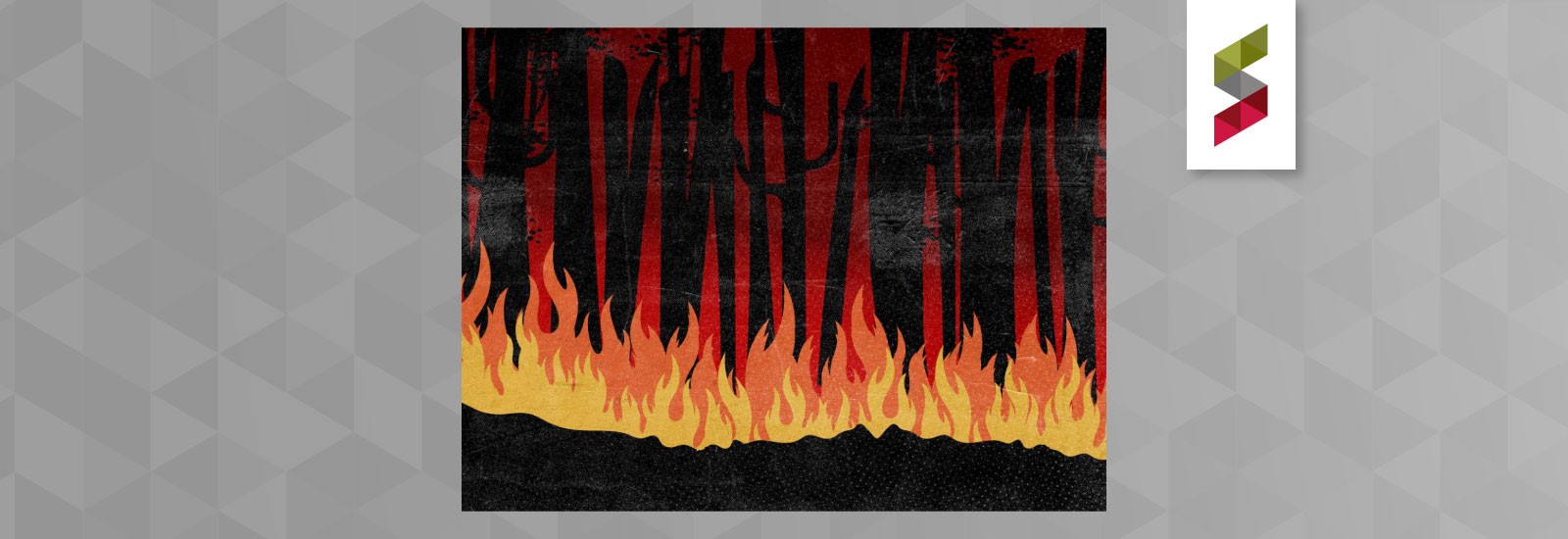The size and scope of the wildfires burning in the western United States are difficult to comprehend.
Fire in September killed at least 34 people, displaced tens of thousands of others and destroyed record acreage in California, Oregon and Washington. Wildfires are also burning in 10 other western states, causing smoke to travel as far as 5,000 miles, reaching Europe.
They’ve also riveted Matt Hamilton, assistant professor in Ohio State’s School of Environment and Natural Resources and core faculty member of the Sustainability Institute. Much of his research focuses on wildfires and land management — how people make decisions and what factors are important.
Hamilton discussed some of the broader societal and ecological systems issues playing out in the more than 90 fires raging in the West.
Q. Are wildfires happening more often?
A. The period of time in which fires are an issue or in the news has definitely changed over the past 15 [to] 20 years.
It used to be that there was a certain period of time during the year that people out West would refer to as the fire season. They would call those periods of time outside of the fire season the shoulder season — a time when you can do forest management without running a big risk of unintentionally sparking a fire.
Nowadays, those shoulder seasons have sort of disappeared, and in many places a much larger portion of the year is essentially the fire season.
Q. Are these fires more severe than in the past?
A. In the western states since the late 1990s, there definitely has been a trend towards what we might call these mega-fires. These are fires that escape initial containment or suppression despite the massive amount of resources, expertise and professionalism of the firefighting programs.
The mega-fires basically burn out of control and cause a lot of damage. They become these very, very large events that really pose a threat to houses, to other assets and even to ecosystems.
Fires are a natural ecological process and they’re necessary in many of these ecosystems, in which many species have adapted to frequent but low-intensity fires. These mega-fires are different.
Q. Is climate change impacting these wildfires?
A. Climate change is definitely a factor. There’s a lot of consensus about that. Some of the main factors that affect fire behavior are weather-related — wind speed, temperature, precipitation and so on. And we have been seeing long-term weather patterns change. Of course, because “climate” refers to multi-decade patterns, it’s not easy to attribute an individual fire to climate change, but it definitely does come into play.
The likelihood of pulling a jack out of a deck of cards increases if you add more jacks to the deck. You don’t know if that jack that you pulled out is the one that you put in. Climate change is essentially stacking the deck, making it more likely that a fire will be that fire that escapes control.
Q. How are land management practices impacting the fires?
A. Land management plays a huge role in affecting wildfire behavior. That is one of the areas where a lot of people are focusing their forest and fire policy efforts, because that is one of the levers that policymakers have to address wildfire conditions.
What is sort of contributing to the situation that we find ourselves in today is that it’s very costly and tricky to manage these lands. And the difficulty of finding the funding for better forest management is almost secondary to the challenge of figuring out how to define the problem itself, and how to make decisions about dealing with it, given the diversity of values that different stakeholder groups have.
In very general terms, the United States’ West has a complex mosaic or quilt of different land-use patterns. There are federal agencies, state agencies, tribes, environmentalists, timber companies and a dozen other groups. They all care about different things. They have different values. They have different understandings of what contributes to wildfire risk, and what sorts of forest conditions they’d even like to see.
And all these people and organizations with different interests are completely interdependent, and they have to coexist in these landscapes.
Fire, of course, doesn’t just burn where it ignites. It spreads across that land. The actions undertaken to manage fire-prone forests in one area of the landscape have huge implications for what matters elsewhere.
Somehow those people need to work out solutions that are mutually acceptable. In many cases, that’s just very, very difficult.
Q. What is the future for the West in terms of wildfires?
A. You can’t conduct fire management in your backyard and hope to be protected by a fire, because fires burn over large areas. You have to think at these landscape scales, and that’s where bringing together lots of different people matters.
There’s not a single policy that we can put in place that’ll fix our fire problem. Forest and fire management is complex and solutions will need to grapple with cultural differences from different groups of people, politics, economics and understandings of the ecology.
With all that said, one promising trend is collaborative approaches for forest management, especially at these very large spatial scales. People must get together and basically try to identify: What are these common values that we have for managing these landscapes? How can we marshal the resources or the goodwill to change how we manage forests and fire?
That sort of collective action is necessary for undertaking forest management practices that really contribute to the resilience of communities and ecosystems over the long term.
